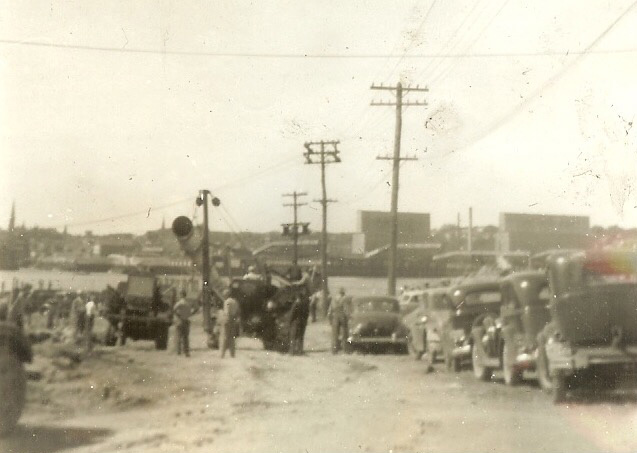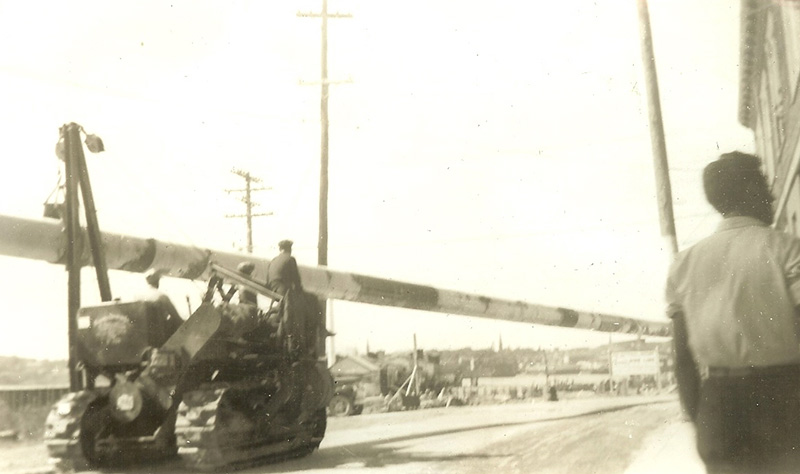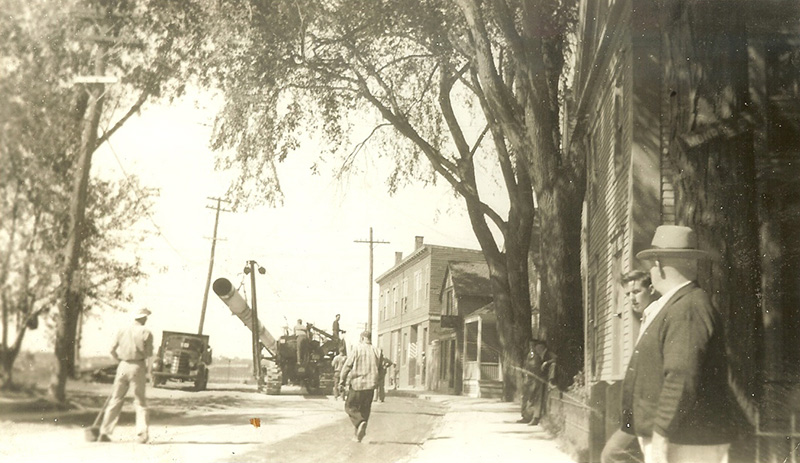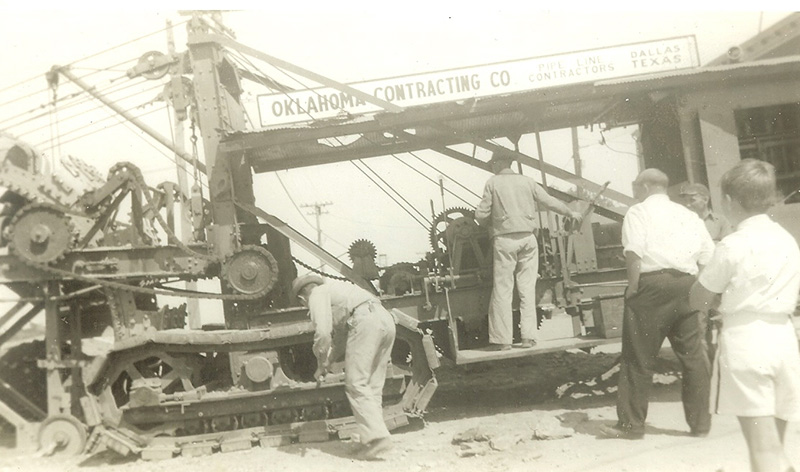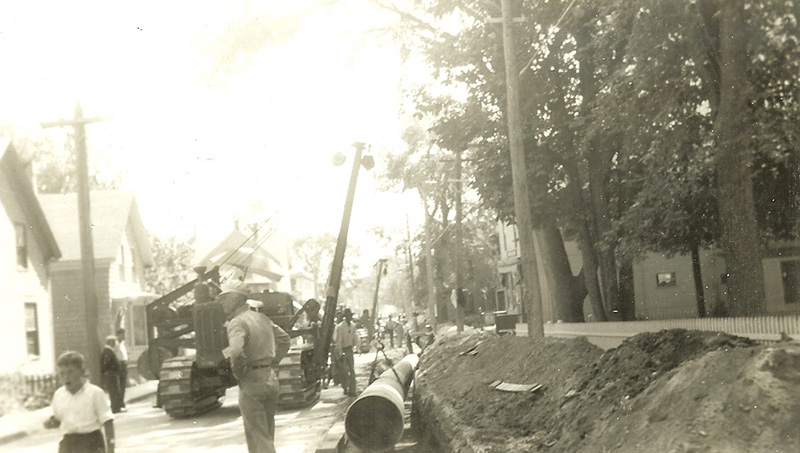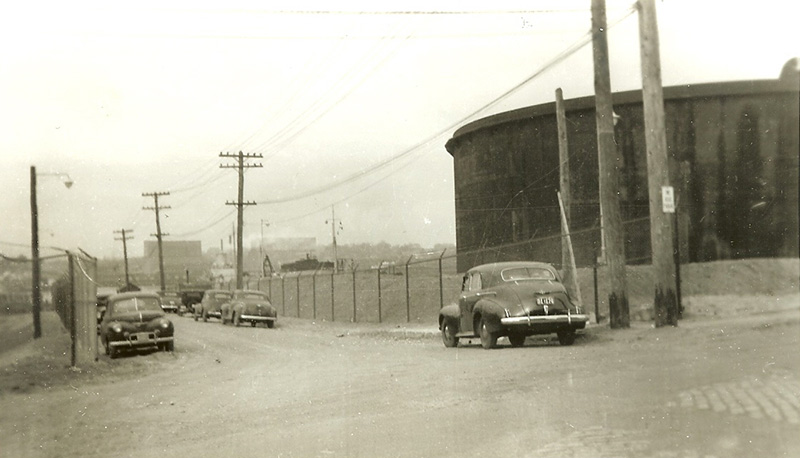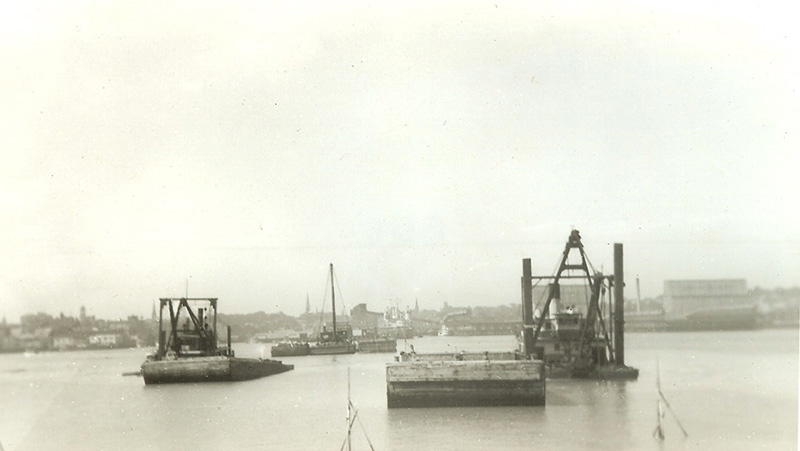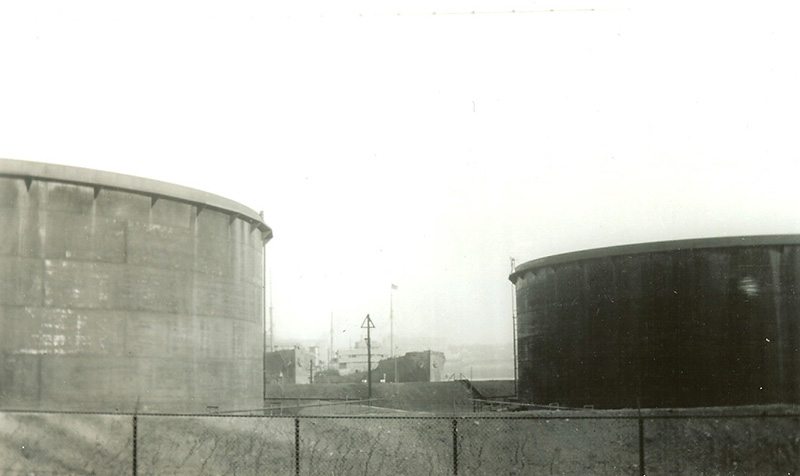SOUTH PORTLAND — The faded black-and-white photographs might seem unremarkable if they weren’t so extraordinary.
Taken in the summer and fall of 1941, they capture some of the first steps and key events as the Portland Pipe Line Corp. built its oil tanker terminal on Front Street and laid its underground pipeline across the city. They show heavy equipment hauling long pipes along Sawyer Street, workers standing waist-deep in trenches and bystanders watching from a few feet away. The cars, homes and clothing styles of the period are captivating.
The photographer was Etta Gregory Watts, who was born on Preble Street in 1879 and lived in the Ferry Village neighborhood throughout her life. While cellphones have made photography commonplace today, few people owned cameras in the 1940s. And Watts made good use of hers, though she wasn’t a professional photographer.
“She was passionate about both her family history and the history of this city that she loved,” said Kathy DiPhilippo, executive director and curator of the South Portland Historical Society. “She took many photographs to document the events taking place in her neighborhood during World War II that were historic not just for South Portland, but which she knew would also hold a place in American and world history.”
Following Watts’ death in 1965, her granddaughter, Carol Darling Campbell, helped establish the Etta Gregory Watts Collection at the society. Many of her photographs are displayed in the society’s museum at Bug Light Park. The collection also can be viewed online at www.sphistory.org.
Send questions/comments to the editors.

